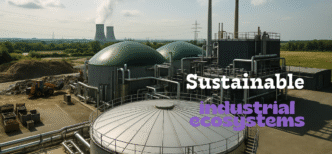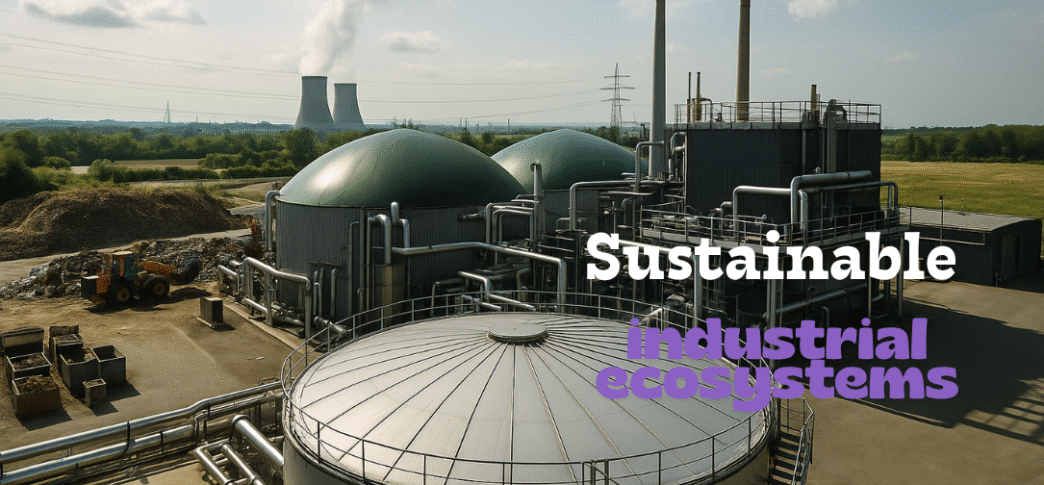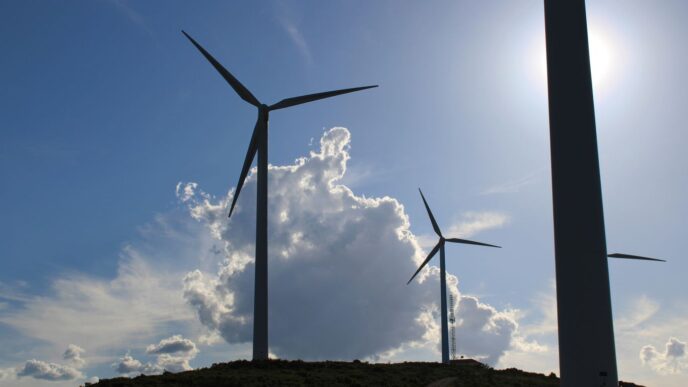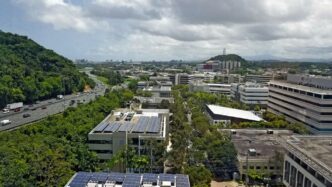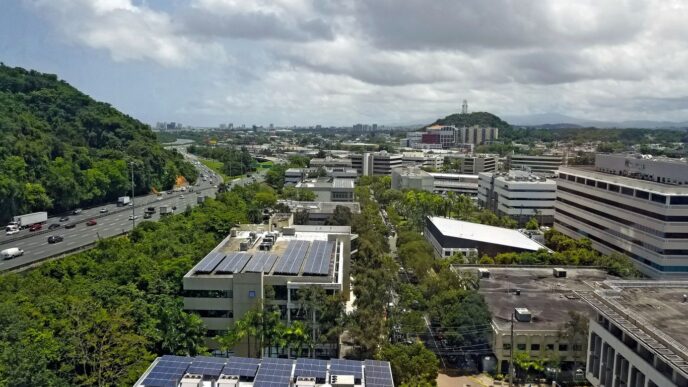How CleanTech Startups Are Redefining the Energy Economy
In an era of climate urgency and global resource scarcity, a silent revolution is taking shape. CleanTech startups are no longer just reducing carbon emissions; they are transforming industrial waste into profitable, sustainable business models. This evolution, known as the Circular Economy, is redefining the energy landscape, turning discarded materials into valuable inputs that fuel industries, drive innovation, and reshape global markets.
The idea is simple but powerful: eliminate waste, keep materials in use, and regenerate natural systems. But the technological sophistication behind it, driven by AI, blockchain, and renewable energy integration, is what’s enabling the world’s shift from a “take-make-dispose” model to one of sustainable regeneration.
According to the Ellen MacArthur Foundation, a leading authority on circular economy models, this approach could unlock $4.5 trillion in global economic value by 2030 while reducing greenhouse gas emissions by nearly 40%.
Technological Breakthroughs Driving the Circular Economy
The rise of the circular economy is not just a policy movement; it’s a technology-driven transformation. Several cutting-edge innovations are enabling industries to convert waste into economic value.
1. Artificial Intelligence and Machine Learning for Resource Optimisation
AI is revolutionising how industries manage waste streams. By analysing massive datasets from manufacturing and logistics systems, machine learning algorithms can identify inefficiencies, optimise resource use, and predict the best recycling or reprocessing pathways.
For instance, AMP Robotics, a Colorado-based startup, uses computer vision and AI to sort recyclables in real time, identifying materials that traditional systems would miss. Their technology can process thousands of items per hour with over 99% accuracy, a game-changer for global recycling operations.
In Asia, Greyparrot, a UK-based AI company working with waste management firms across Singapore and India, deploys smart vision systems that monitor and report waste compositions. The data helps cities improve recycling rates and track circular performance metrics.
2. Bioengineering and Green Chemistry Innovations
Beyond digital tools, biotechnology and green chemistry are revolutionizing material reuse. Synthetic biology is being used to convert organic waste into renewable fuels, bioplastics, and high-value chemicals.
A notable case is LanzaTech, an Illinois-based carbon recycling company that uses genetically modified microbes to ferment industrial emissions into ethanol. The company has partnered with Zara and Unilever to create carbon-smart packaging and textiles.
According to Reuters, LanzaTech’s process has already prevented over 200,000 tons of CO₂ from entering the atmosphere.
Similarly, Carbios, a French biotech firm, has developed an enzyme-based process that breaks down PET plastic into its original monomers, allowing it to be recycled indefinitely. This innovation could revolutionize the global packaging industry responsible for 141 million tonnes of plastic waste annually, according to Statista (2024).
3. Blockchain for Material Traceability
Transparency is key in a circular economy, and blockchain is proving invaluable in ensuring accountability throughout the supply chain. Startups like Circularise (Netherlands) and Provenance (UK) are using blockchain to trace the lifecycle of products from raw materials to end-of-life reuse.
This technology helps businesses verify recycled content, prevent greenwashing, and comply with tightening ESG regulations such as the EU’s Corporate Sustainability Reporting Directive (CSRD).
In 2025, the European Commission also announced plans to integrate blockchain-based “digital product passports” to trace materials and carbon footprints across industries.
Industries Leading the Circular Transformation
The circular economy’s impact extends across multiple sectors, from energy and construction to fashion and electronics. Each industry faces unique challenges and opportunities.
1. Energy and Power Generation
The energy industry sits at the heart of the circular revolution. CleanTech firms are increasingly turning industrial waste, biomass, and even captured CO₂ into renewable energy sources.
For example, Neste (Finland) produces renewable diesel from used cooking oil and waste animal fat, reducing lifecycle emissions by up to 90% compared to fossil fuels. Meanwhile, Climeworks, a Swiss company, uses direct air capture to extract CO₂ and sell it as a raw material for fuels and carbonated beverages, proving that carbon can be both an environmental burden and a business opportunity.
In India, startups like GPS Renewables are turning food and agricultural waste into bio-CNG and organic fertilizers, helping industries achieve both cost savings and carbon neutrality.
2. Manufacturing and Heavy Industry
Heavy industries, historically some of the biggest polluters, are now becoming central to the circular model. ArcelorMittal, the world’s largest steelmaker, is investing in carbon capture and reuse technology to transform steel plant emissions into ethanol and synthetic fuels.
In 2024, Tata Steel launched a program to reuse steel slag in road construction, saving millions in waste management and raw material costs.
According to McKinsey & Company, circular manufacturing could reduce raw material costs by $630 billion annually in Europe alone.
3. Fashion and Consumer Goods
Fashion is another sector being reshaped by circular innovation. Waste reduction, recycling, and sustainable material sourcing have become central themes for both startups and luxury brands.
Resale and rental platforms such as ThredUp, Vestiaire Collective, and Rent the Runway are extending the lifespan of clothing, while startups like Worn Again Technologies and Ambercycle use molecular recycling to convert old textiles into new fabrics.
In 2025, H&M Group announced its goal to become fully circular by 2030, investing heavily in textile recovery systems.
4. Electronics and E-Waste Management
E-waste is the fastest-growing waste stream globally, according to the UN Global E-waste Monitor 2024, which estimates that the world generated 62 million metric tons of electronic waste last year, only 22% of which was properly recycled.
CleanTech startups are addressing this crisis head-on. Urban Mining Company in the U.S. extracts rare earth magnets from discarded electronics, reducing dependency on environmentally damaging mining operations.
Similarly, Closing the Loop (Netherlands) works with African partners to collect, ship, and recycle used mobile phones responsibly creating green jobs in the process.
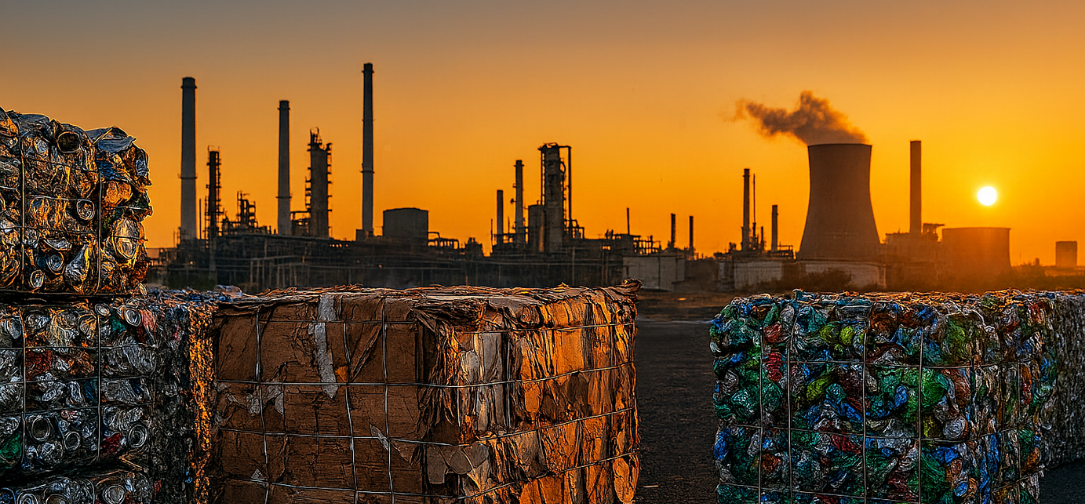
Economic and Policy Implications
The Economic Case for Circularity
The shift to a circular economy isn’t just about saving the planet it’s about making money sustainably. The World Economic Forum (WEF) estimates that adopting circular principles could generate $4.5 trillion in new economic growth by 2030.
For businesses, circularity means turning waste streams into profit centers. Manufacturers that adopt resource-efficient models report cost reductions of 10–20%, according to Accenture’s 2024 Circular Advantage Report.
Moreover, investors are rewarding circular innovation. Global sustainable investment funds surpassed $4.8 trillion in assets in 2025, according to Morningstar, with a growing share directed toward circular economy ventures.
Policy and Regulation: A Global Push
Governments are reinforcing this transformation through ambitious policy frameworks.
- The European Union’s Circular Economy Action Plan mandates eco-design, product recyclability, and reduced waste generation across sectors.
- In the United States, the EPA’s National Recycling Strategy (2025) aims to strengthen supply chains for recycled materials and incentivise clean manufacturing.
- China’s Circular Economy Promotion Law focuses on industrial symbiosis, encouraging companies to exchange waste and by-products to reduce resource use.
- Africa’s Circular Economy Alliance (ACEA), co-founded by Rwanda, Nigeria, and South Africa, is mobilizing funds for waste-to-energy and recycling startups.
These policies are pushing industries to innovate faster, while global financial institutions including the World Bank and UNIDO are providing funding mechanisms for circular transition projects.
The Ethical Dimension: Sustainability Meets Responsibility
Circular economy practices extend beyond profit they address ethical imperatives like environmental justice, equitable labor, and global resource balance.
For example, AgriProtein, a South African startup, raises black soldier flies on organic waste to produce sustainable animal feed. It not only diverts tons of waste from landfills but also supports low-income communities through local production jobs.
In Latin America, Biofase transforms avocado seeds into biodegradable cutlery, reducing plastic waste while supporting local farmers.
Such models highlight that circularity is not just an economic model, it’s a moral framework redefining corporate responsibility.
Regional Outlook: Circular Economies Around the World
United States
The U.S. CleanTech sector is booming, with states like California and New York investing heavily in waste-to-energy and green hydrogen. The Inflation Reduction Act (IRA) of 2022 continues to incentivize renewable innovation, spurring a wave of circular ventures like Brightmark Energy, which converts plastic waste into low-carbon fuels.
Europe
Europe remains the global leader in circular policies. The EU Green Deal and Circular Economy Action Plan 2.0 are fostering industrial symbiosis and product longevity. Startups like Northvolt (Sweden) are building battery recycling ecosystems to secure raw materials for electric vehicles.
Asia
Asia’s rapid industrial growth makes it both a challenge and an opportunity. China and Japan are investing in industrial parks based on “zero waste” principles. Singapore’s Sustainable Manufacturing Initiative (SMI) is driving AI-driven waste management and green factory innovations.
Africa
Africa’s circular economy is still emerging but rapidly evolving. Nigeria’s RecyclePoints and Kenya’s Mr. Green Africa are pioneering waste collection and plastic recycling networks. Governments are beginning to integrate circularity into national economic plans, seeing it as both a sustainability and job-creation strategy.
The Future of the Circular Economy
As we approach 2030, the global economy is pivoting toward systems where waste is no longer a byproduct but a valuable resource. The intersection of CleanTech, AI, and policy reform is creating a new industrial order, one where sustainability equals profitability.
The International Energy Agency (IEA) predicts that by 2035, circular business models could reduce industrial CO₂ emissions by 45%, while also creating over 9 million green jobs worldwide.
CleanTech startups will continue to lead this transformation redefining how we manufacture, consume, and sustain the planet.
The circular economy is not just an environmental movement; it’s the next industrial revolution, one driven by data, ethics, and innovation.

